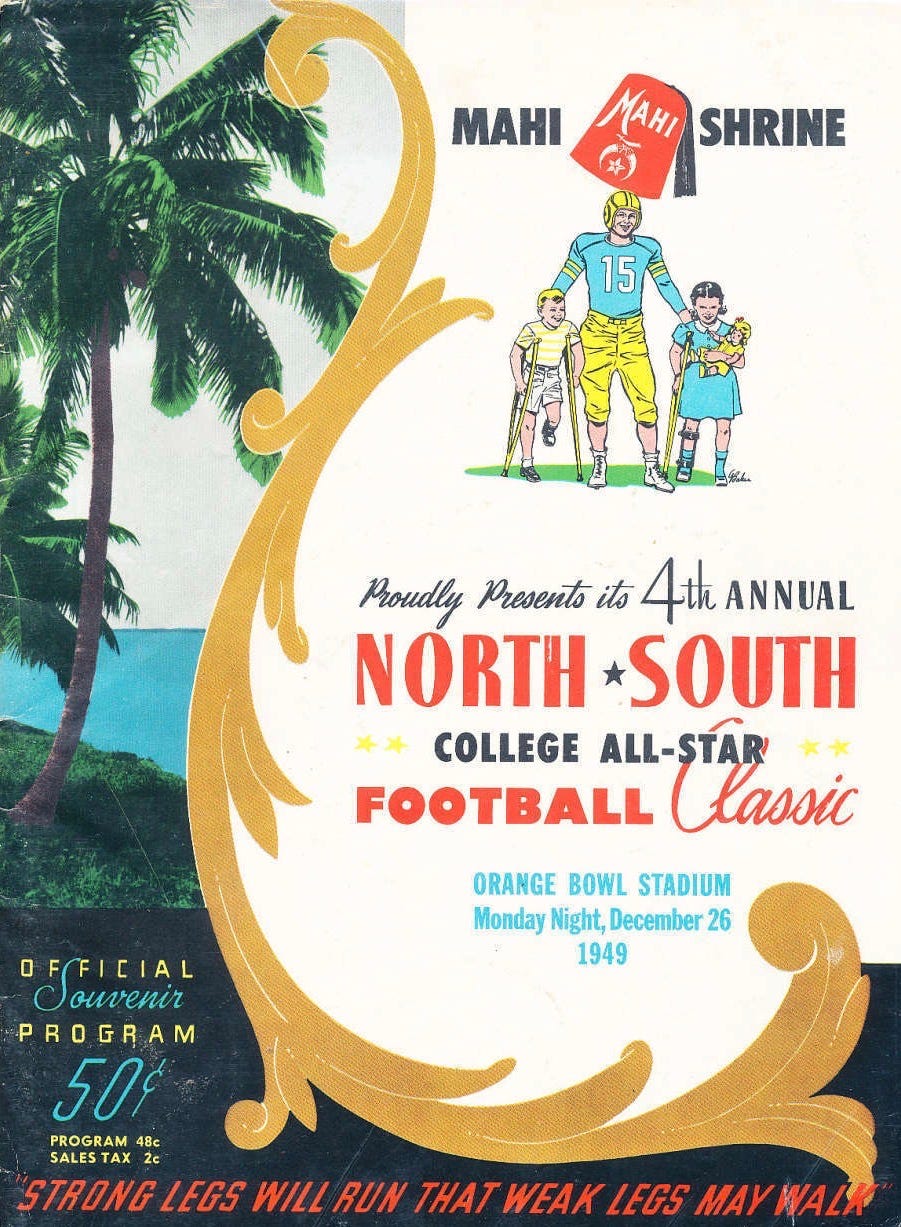Today's Tidbit... Two Platoon Or Not Two Platoon?
Before everybody and their brother went to the playoffs or a bowl game, most college football teams ended their season by Thanksgiving. The 1950 bowl season, for example, had the Rose, Orange, Sugar, Cotton, and Sun, and the Gator, Tangerine, Salad, and Raisin Bowls. The limited number of college team bowl games meant the holidays could host an all-star classic like the North-South All-Star game, scheduled for December 26, 1949, at Burdine Stadium (aka the Orange Bowl).
Nowadays, all-star games are made-for-TV and made-for-NFL scouting events, so they occur after the Super Bowl, but back then, the all-star games entertained local fans and raised money for the Shriners hospitals.
What caught my eye about the 1949 North-South game was that it occurred while football transitioned from a single-platoon to a two-platoon game. Coaches, columnists, and fans regularly argued the merits and demerits of the two versions of football (college football returned to single-platoon football in 1952). Each coach chose the best version for their team. But which approach made sense for an all-star game? Do you go two-platoon to maximize the number of players who see the field, or stick to the old single-platoon ways? If you use the single-platoon system, what do you do with players who played only offense or defense during the regular season?
Today, coaches do not have to answer that question, but they did in 1949 when Herman Hickman coached the North team. Despite using the two-platoon system at Yale, Hickman used the single-platoon approach with frequent substitutions, while Miami's Andy Gustafson took the two-platoon approach with the South.
The North won the game 20-14, with both teams leaving it all on the field, especially Vanderbilt's Lee "Long Gone" Nalley. Nalley returned a punt 80 yards for a touchdown and later tackled game MVP and Villanova fullback Ralph Pasquariello. Unfortunately for Nalley, lacking a face mask, he broke his nose on the play, leaving two teeth on the field.
Football Archaeology is reader-supported. Click here to buy one of my books or otherwise support the site.



